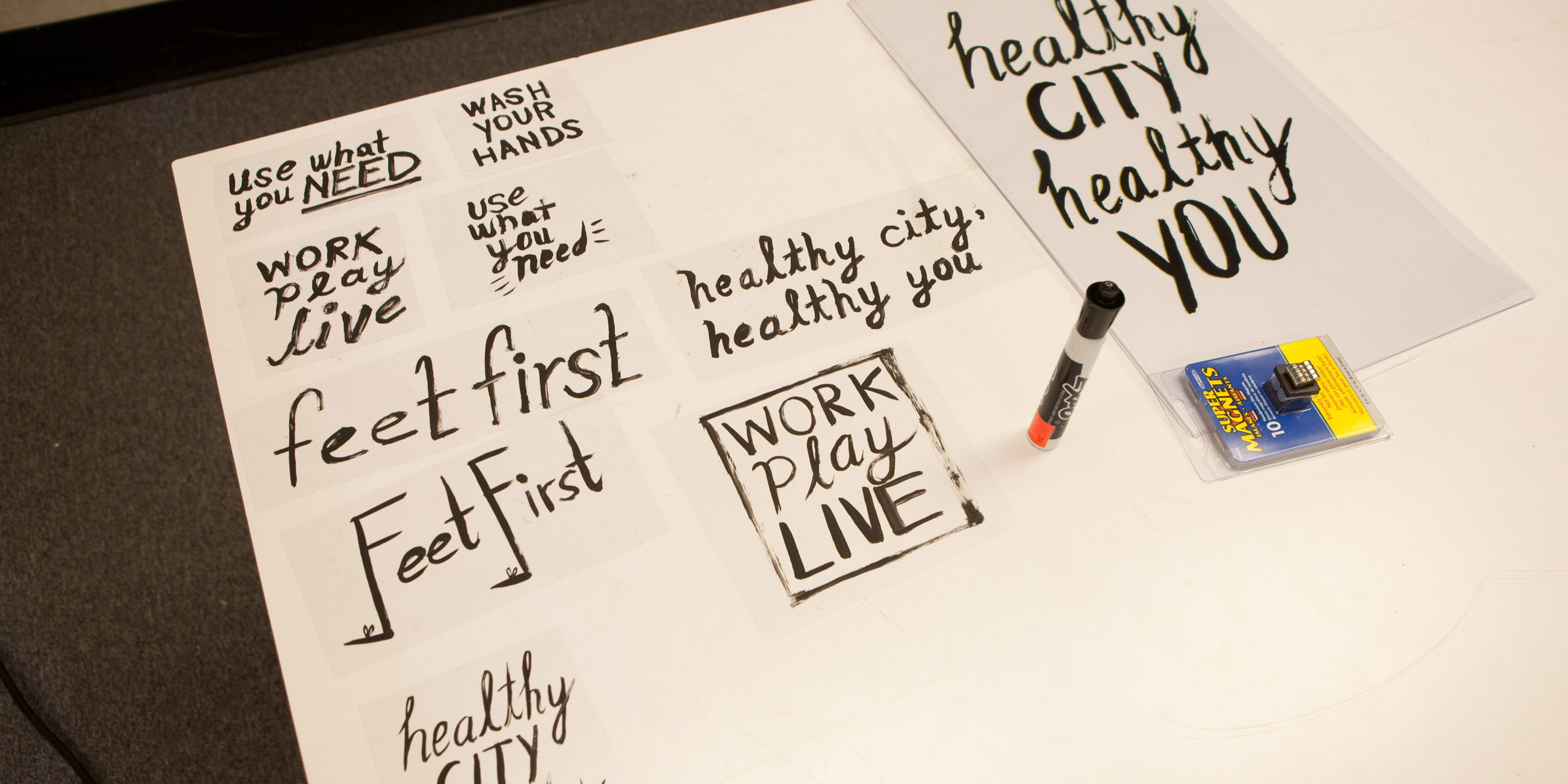GREEN CITY INFRASTRUCTURE
One of a series of animated PSAs on the topic of urban health for the Pan American Health Organization and World Health Day.

Fall 2009, Spring 2010
The World Health Day 2010 campaign envisions a healthier city now and into the future. Weaving together complex urban issues, students address key health factors affecting megacities across the Americas.
“Students came together from Illustration, Graphics, Motion, and Advertising; their success was due to collaboration and teamwork, as well as to their individual talents.”
– Esther Pearl Watson, Lead Faculty, Illustrator
“Through thorough exploration of the thematic issues related to urbanism and healthy living, the student teams of Designmatters at Art Center have created and delivered three outstanding illustrative video animations that engage the viewer in the discussion process and will serve the Organization well. Kudos.”
– Gilles Collette, Institutional Branding, PAHO
“The movements, the music, the sequence of edits…they all came together and added a deeper layer of communication to the piece beyond which the original story boards could detect.”
Theo Alexopoulos, Motion Designer

Megacities, as defined by PAHO (Pan American Health Organization) are those cities that contain over 10 million people. They are developing rapidly, and with equal rapidity they are changing our global landscape.
PAHO is a global health organization and the Regional Office for the Americas of the World Health Organization. With this project, the issue of urban health was addressed for World Health Day: April 7, 2010. The PAHO/Art Center Designmatters collaboration was conceived of with a global flavor, speaking a universal language, with a full, strong and positive message.
This campaign was asked to look at the intersections of urban health, and the city as a system. Taken into account were how the social determinants of health in megacities are interrelated, and how they come together to support health. Included among these social determinants are: lack of access to education, inadequate housing, poor sanitation, violence, environmental hazards, and poverty.
Through this lens, students were asked to look at the complexities facing urban environments and create a campaign that addressed the message: “What must be done to pursue a city that is a healthier and better place to live? ” That same message had to speak to, and reach, demographic groups from the young to the very old (within the general public,) as well as local authorities, including: mayors, city council members, and other decision makers.
Choosing to focus on iconic topics, rather than iconic cities, students went beyond addressing risk factors and broadened out to the ways in which one issue affected another. Their view on the interconnectivity of urban areas brought clarity to the concept of “city as a system.”
The campaign sought to illuminate how urban areas are looking at, and moving toward, a clean, safe and vibrant future–a future where humans are thriving and fulfilling their greatest potential.

In striving to understand how conditions are created that will make people healthy, research was done around the factors that come together in an urban setting, including: the conditions in which people live, physically, and the way they relate, socially.
Research took two main paths. One involved reflecting back for the individual and general public in urban areas. A second was devoted to inspiring those in governance capacities. For the first path, students were asked to visualize a person in her 20s living in a favela (slum) in Sao Paulo, Brazil and consider the project vis-a-vis “What would that young woman would get out of their poster?” Next, they were asked to steer the project’s focus towards teens in the city who would be seeing their PSA on TV, and ask themselves: “How will they be motivated by what this work is showing them?” Later, while working on the second research path, students were asked to conduct research geared to the demographic group of policymakers. Here they were asked to, “Look at governance, at how decisions are made, at who makes them, and at what are the opportunities for the communities that lie within these governing bodies?”
Always, it was emphasized, every idea needed to circle back to the city as a whole. Students researched where people live, work and play. They researched issues of equity and inequity–looking for those places where there is inequity and researching what was being done about it.
Students collaborated with PAHO and received key data and research from PAHO staff.
To further aid students in their academic research, Zeynep Toker, Ph.D. Assistant Professor, Department of Urban Studies and Planning, California State University, Northridge, lectured on urban health and presented information on sustainable urbanism, compact cities, and issues facing urban forms.
To assist students in their technical research, JJ Stratford conducted a hands-on workshop in hands-on stop motion.
To support their animation/animatronic work on the three PSAs, Motion Designer and Art Director, Theo Alexopoulos worked with the students throughout both the Fall and Spring terms.

A unified outreach strategy around urban health was designed and created by the student team. This promotional campaign was received for PAHO to unveil at World Health Day: April 7, 2010, and then deploy at activities planned throughout the year. The campaign, perceived as a rallying cry for communities, was achieved through equal parts wake-up call and call to action, via:
Three motion-based PSAs which were received by PAHO for public broadcast across media platforms (cable and television, and/or streamed across Internet channels, and social network platforms), and a series of 15 posters detailing the various facets of urban health.
Together, the students visualized building a healthier and more livable megacity starting today and moving into the future.
One of a series of animated PSAs on the topic of urban health for the Pan American Health Organization and World Health Day.
One of a series of animated PSAs on the topic of urban health for the Pan American Health Organization and World Health Day.